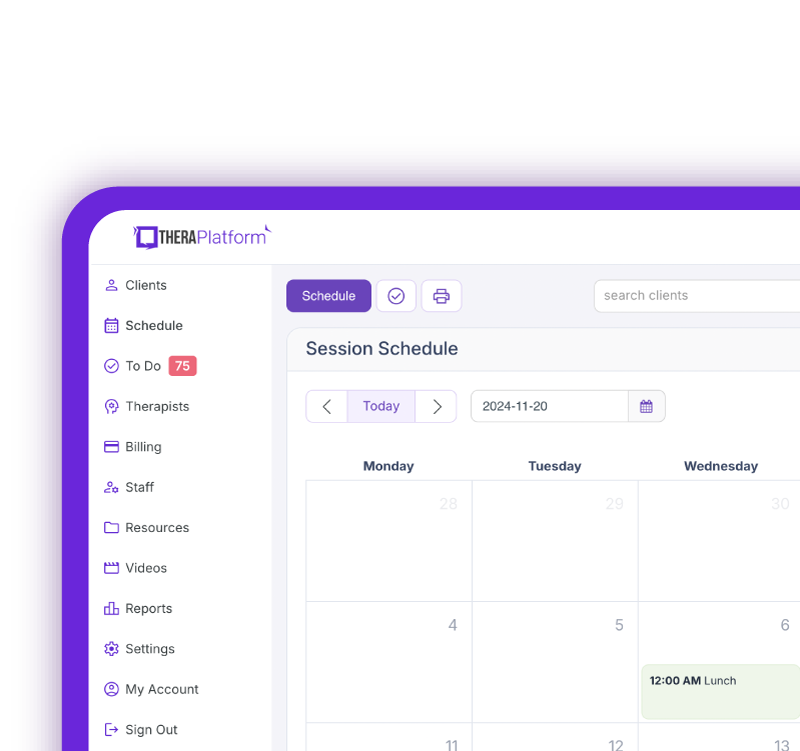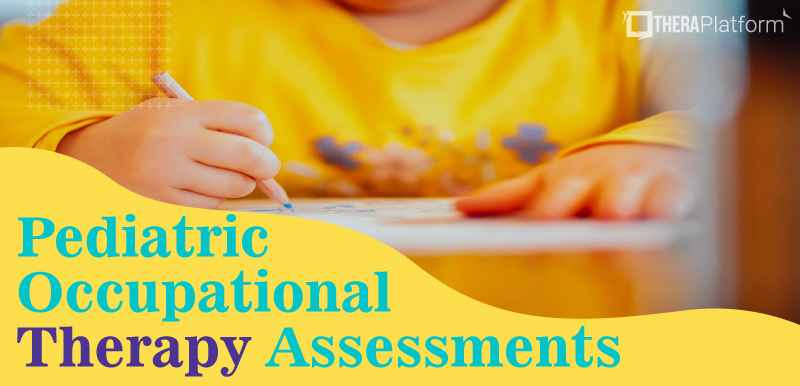Beery VMI

Beery-VMI is one of many functional assessments that are essential for an occupational therapy evaluation. Standardized assessments that are functional, quick to administer, and provide norm-referenced standardized scores are even better. The Beery-Buktenica Developmental Test of Visual-Motor Integration - Sixth Edition or the Beery-VMI, can offer all of those things and more to therapy practitioners. First published in 1967, this test has been extensively studied and updated over many decades.
Summary
- The Beery-VMI is a standardized, evidence-based assessment that evaluates visual-motor integration in individuals ages 2 to 100 through progressively complex drawing tasks.
- Therapists can choose to administer the full assessment or optional subtests in visual perception and motor coordination to get a more detailed view of specific challenges.
- Scoring is guided by clear, objective criteria and is easy to complete using the administration manual and client’s age for norm-referenced scores.
- While quick and accessible, the Beery-VMI is limited to drawing tasks and may not fully capture visual-motor skills used in everyday functional activities.
- Leveraging an EHR can help therapists document assessments and treatment plans.
Streamline your practice with One EHR
- Scheduling
- Flexible notes
- Template library
- Billing & payments
- Insurance claims
- Client portal
- Telehealth
- E-fax

What does the Beery VMI test for?
The Beery-VMI remains a popular assessment among occupational therapists. It evaluates an individual's ability to coordinate what they see (vision) with their movements (motor). Therefore, the test looks at the ability to integrate those two systems. A simple and functional way to assess visual-motor skills is by drawing. The Beery-VMI requires the client to draw increasingly complex shapes and grades the results so that the client receives a measurable score.
Currently in its sixth edition, the Beery-VMI can be used on clients ages two to 100. There are four components of the assessment (therapists can select which pieces they'd like to administer).
What age is the Beery VMI for?
- Long forms (for all ages)
- Short forms (for ages 2-7)
- Visual perception forms
- Motor coordination forms
You’ll need to supply a pencil and a protractor. A timer is needed for the visual perception and motor coordination subtests.
While the Beery-VMI tends to be the most widespread visual-motor assessment in occupational therapy, two subtests isolate the two skills. A visual perception and motor coordination subtest can give therapists a complete picture of specific challenges. Both of these subtests are optional.
Practice Management + EHR + Telehealth
Manage more in less time in your practice with TheraPlatform

The Assessment Booklet for the Beery-VMI
Each client will have their own testing booklet that is several pages. The first page has straightforward images to copy, like lines and circles. On each subsequent page, the geometric designs get more complex.
Scoring the Beery-VMI
Before coming up with standard scores, you’ll need to assign points to get raw data based on the drawings your client completed. The administration manual dedicates two pages to each potential drawing with written criteria and picture examples of how to assign points to a particular drawing. For example, the circle must be a loop with no more than a 2:1 ratio of height and width. You can stop scoring further items when three drawings in a row don't receive points. The combination of written directions and picture examples helps clarify where therapists are and aren't supposed to score points.
After collecting the raw data, therapists use the chronological age of their clients to find scaled scores, standard scores, and percentile ranks. Scoring for each of the forms and the subtests is the same. If you score more than one test for the same client, all the data can be collected on the same page in the administration manual, making scoring faster.
Is the Beery-VMI a ‘Must-Have?’
While this test is often used for visual-motor testing, it isn't always necessary. Other assessments, such as the Bruininks-Oseretsky Test of Motor Proficiency (BOT-2), have a visual-motor component that will be sufficient for a quick screen.
Tips for conducting the Beery-VMI
Stick to the administration manual so you can offer the results as standardized. If you need to go off-script (for example, a child who needs extra encouragement and motor breaks in between tasks), be sure to record that in your evaluation write-up for context.
Tracing the items or practicing first and using an eraser is not allowed. Be sure to communicate this to your client.
For further information, observe how your client approaches the task (for example, their response to challenging items, posture, and any cognitive strategies they demonstrate).
The Beery-VMI is designed to be administered while the client sits at a table. If you plan to conduct additional tabletop assessments, alter them with gross motor work to get the best picture of your client’s abilities.
Free Resources for Therapists
Click below and help yourself to peer-created resources:

Advantages of using the Beery-VMI
- Conducting the assessment does not take much time.
- Clients tend to be motivated to complete short tasks.
- The test has high reliability and validity.
- The Beery-VMI has been used for nearly 50 years and has extensive evidence to support it.
- The administration manual quickly makes the drawings objective, and it is clear where to assign points.
- It is not physically demanding, making it accessible to more clients.
- The therapist can evaluate several clients at the same time with this tool.
Downsides to using the Beery-VMI
While it is a functional assessment, the test limits visual-motor integration to drawing skills. It is helpful for therapists to get a picture of other skills, such as writing, catching a ball, navigating a crowded room, or copying from a board.
No guided observations are embedded into the assessment.
Alternatives to the Beery-VMI
The Test of Visual Motor Skills (TVMS-3) is similar in design to the Beery-VMI. It also has the client complete increasingly challenging drawings. It is norm-referenced (with a smaller sample) for ages 3 to 90. Rather than specific criteria for each design, the TVMS-3 has therapists identify nine different errors that are consistent throughout the test.
The Bruininks-Oseretsky Test of Motor Proficiency (BOT-2) is another popular pediatric evaluation with a visual-motor component. However, the age range is limited from 4-22, and both the short and long forms look at several other motor skills.
The Beery-Buktenica Developmental Test of Visual-Motor Integration- Sixth Edition has many appealing features for occupational therapists evaluating visual-motor skills. The quick administration, client interest, and clear guidelines for scoring make it a popular test across different practice areas and for clients with a variety of diagnoses.
Streamline your practice with One EHR
- Scheduling
- Flexible notes
- Template library
- Billing & payments
- Insurance claims
- Client portal
- Telehealth
- E-fax

Resources
TheraPlatform is an all-in-one EHR, practice management, and teletherapy software built for therapists to help them save time on admin tasks. It offers a 30-day risk-free trial with no credit card required and supports different industries and sizes of practices, including occupational therapists in group and solo practices.
More resources
- Occupational therapy assessments
- CPT codes for occupational therapy
- Occupational therapy SOAP notes
- DAYC-2
- Ultimate teletherapy ebook
- The Ultimate Insurance Billing Guide for Therapists
FAQs about the Beery-VMI
What does the Beery-VMI assess?
The Beery-VMI evaluates visual-motor integration, measuring how well an individual coordinates visual perception with motor output through increasingly complex drawing tasks.
What ages can complete the Beery-VMI?
The assessment is designed for individuals ages 2 to 100, with long and short forms available, plus optional subtests for visual perception and motor coordination. The assessment is designed for individuals ages 2 to 100, with long and short forms available, plus optional subtests for visual perception and motor coordination.The Beery-VMI is typically quick to administer, with clear scoring criteria in the manual. Subtests may require a timer, pencil, and protractor. Results are norm-referenced based on chronological age.



